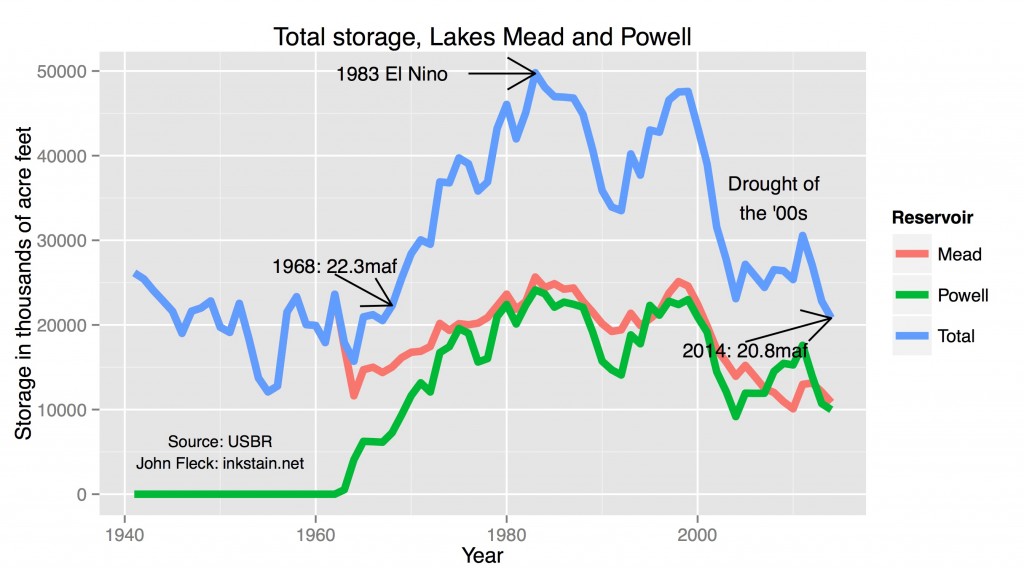Lake Powell, the large Upper Colorado River Basin Reservoir sitting behind Glen Canyon Dam, ended May with a surface elevation of 3,599.44 feet above sea level, 3 feet higher than projected a month ago, thanks to greater-than-anticipated runoff during the month. Some of that’s just time-shifting – an early melt bringing water down sooner than expected. But the U.S. Bureau of Reclamation’s new 24-Month Study (pdf) shows some slight improvement, estimating the end-of-September water levels to be slightly higher in Lake Powell than the agency projected in last month’s analysis.
That’s the good news. Here’s the bad news. As I wrote last Thursday, the new 24-Month-Study seems to suggest increasing probability of a shortage declaration on the Colorado River by 2015, instead of 2016, as officials had indicated last month. I’ve extended my little reservoir storage graph to include estimated storage to the end of the 2014 water year, and while the end of 2013 shows a slight improvement over last month, you can see that total Mead-Powell storage is projected to be, by next year, at its lowest levels since Lake Powell was first filled in the 1960s:

